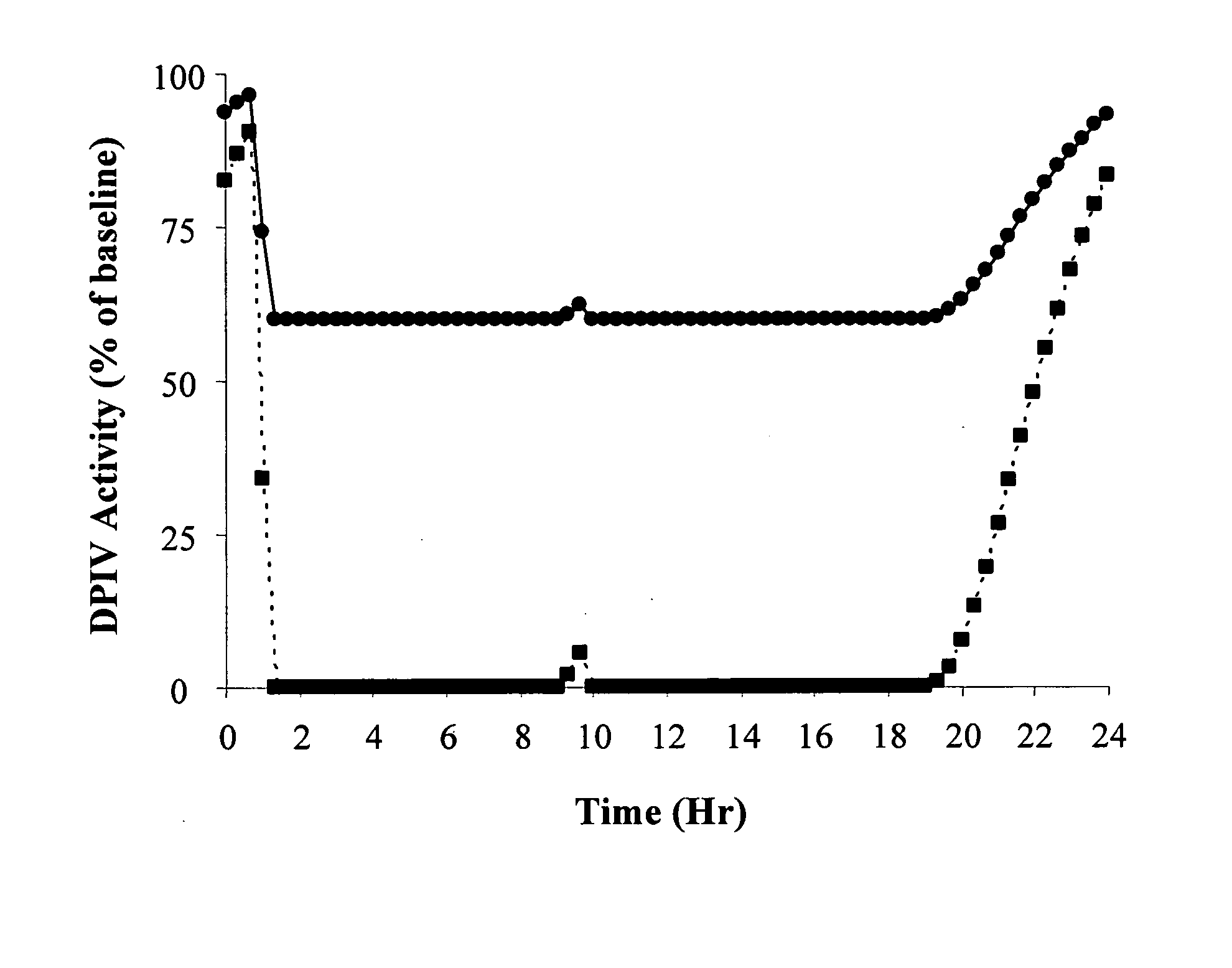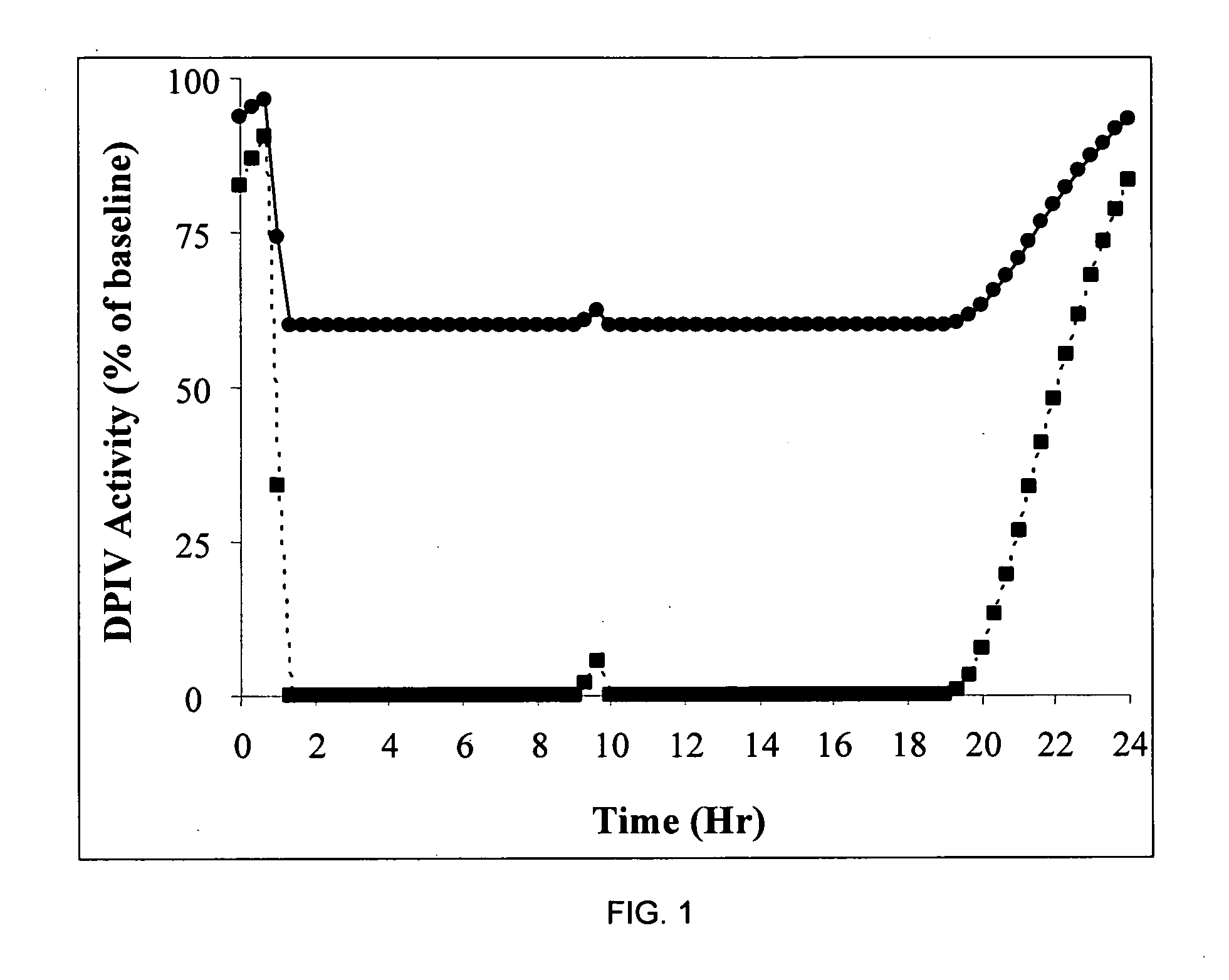Treating diabetes with glucagon-like peptide-1 secretagogues
a glucagon-like peptide and insulin-resistant technology, applied in the field of treating diabetes and insulin-resistant, can solve the problems of reducing the activity of dpp-iv, and reducing the ability of glp-1 to properly bind and activate its receptor, so as to improve the basal glp-1 level and improve the effect of glp-1
- Summary
- Abstract
- Description
- Claims
- Application Information
AI Technical Summary
Benefits of technology
Problems solved by technology
Method used
Image
Examples
Embodiment Construction
[0019] A. Overview
[0020] In general this invention can be viewed as encompassing novel methods of treating diabetes and insulin resistance. The inventors have made the discovery that increasing secretion of endogenous glucagon-like peptide-1 (GLP-1) in combination with inhibiting the activity of dipeptidyl peptidase I (DPP-IV) can have a significant impact on hyperglycemia and insulin secretion in subjects suffering from diabetes and / or insulin resistance. Further the invention encompasses methods of identifying subjects having elevated secretion of GLP-1, methods of assessing sensitivity to a GLP-1 secretagogue, and methods of treating diabetes in these subjects by administering a GLP-1 secretagogue to alleviate at least one symptom of diabetes.
[0021] B. Definitions
[0022]“Administering” means any of the standard methods of administering a pharmaceutical composition known to those skilled in the art. Examples include, but are not limited to enteral, transdermal, intravenous, intr...
PUM
| Property | Measurement | Unit |
|---|---|---|
| molecular weights | aaaaa | aaaaa |
| time | aaaaa | aaaaa |
| half life | aaaaa | aaaaa |
Abstract
Description
Claims
Application Information
 Login to View More
Login to View More - R&D
- Intellectual Property
- Life Sciences
- Materials
- Tech Scout
- Unparalleled Data Quality
- Higher Quality Content
- 60% Fewer Hallucinations
Browse by: Latest US Patents, China's latest patents, Technical Efficacy Thesaurus, Application Domain, Technology Topic, Popular Technical Reports.
© 2025 PatSnap. All rights reserved.Legal|Privacy policy|Modern Slavery Act Transparency Statement|Sitemap|About US| Contact US: help@patsnap.com



